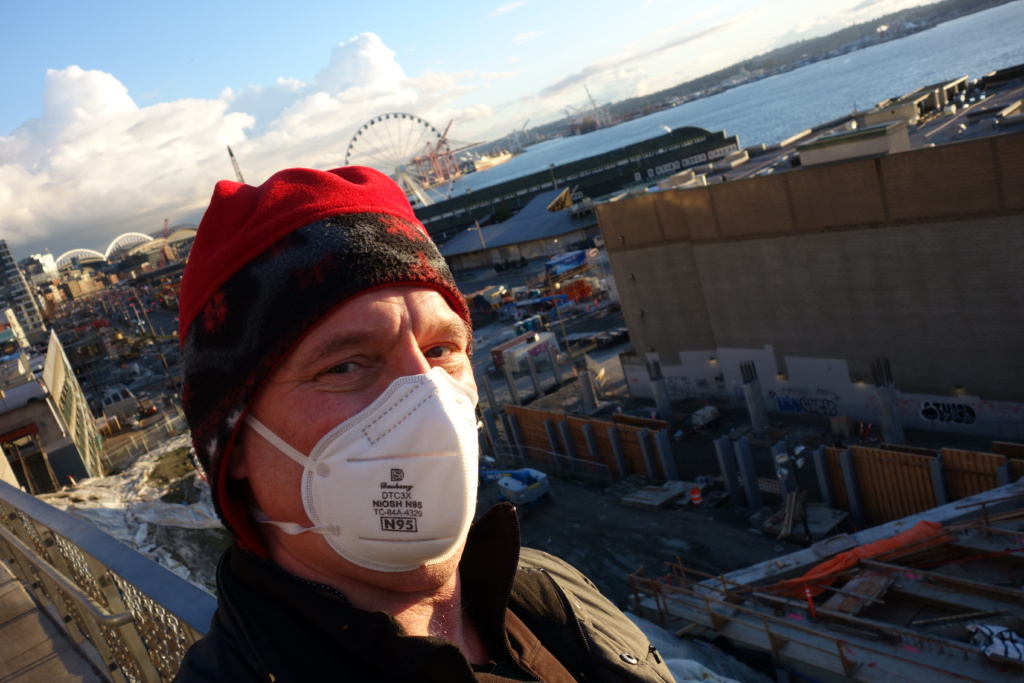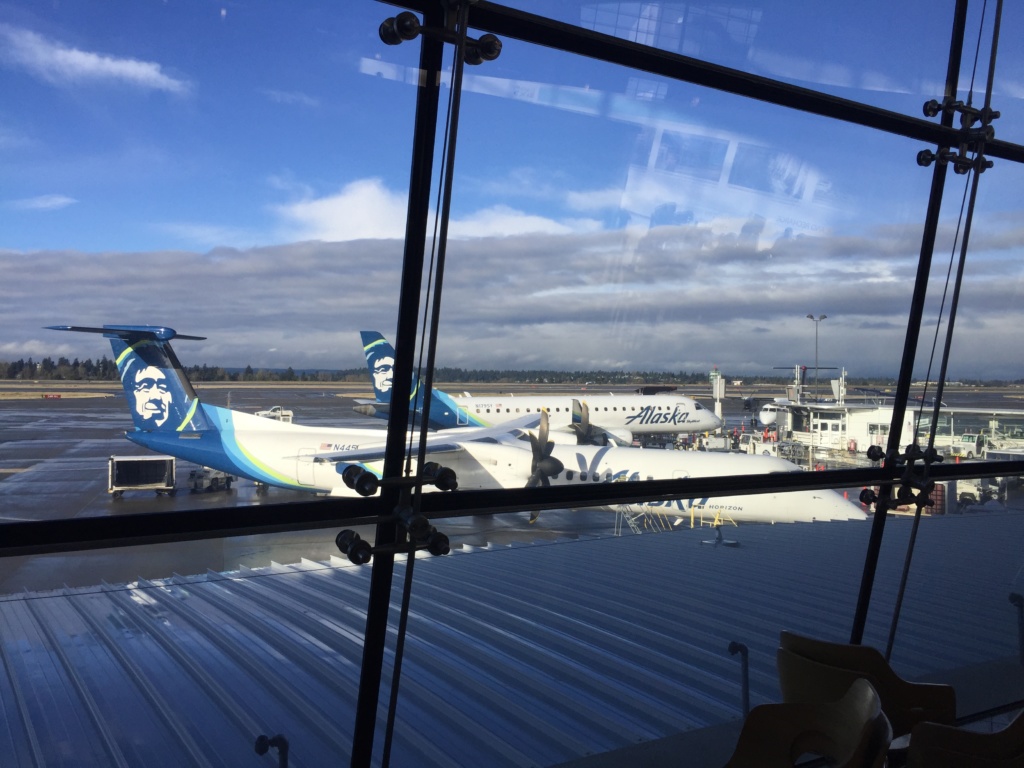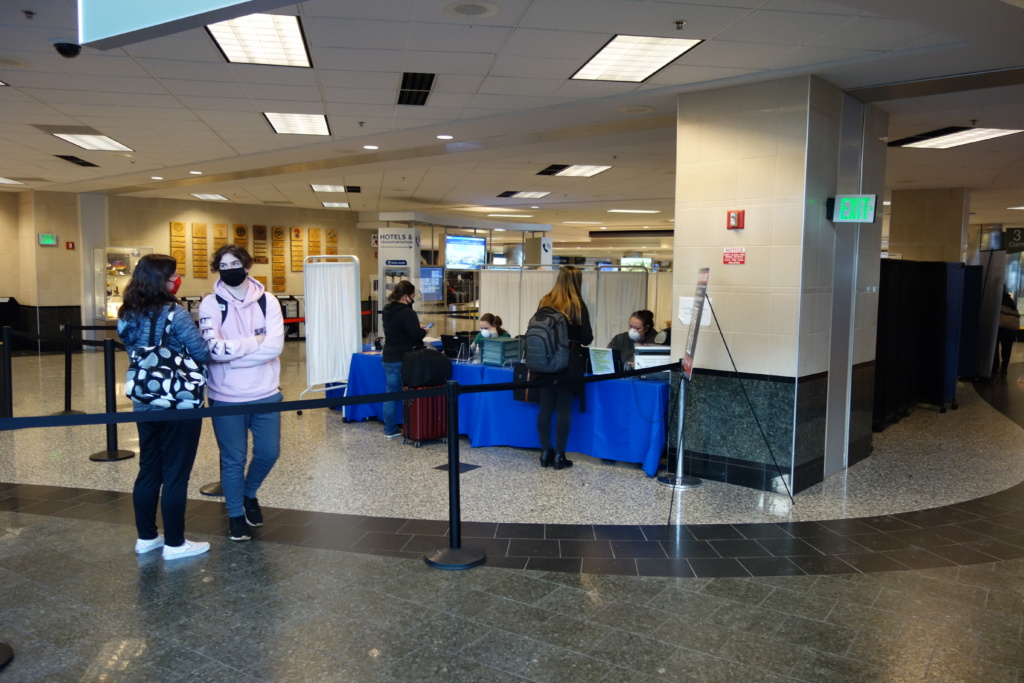
I woke up in Seattle earlier this week, with a reservation on Alaska Air to return to Anchorage.
In keeping with Alaska’s travel protocol, I went through the steps the state has in place to help stem the spread of COVID-19. Here’s my report.

5:40 a.m. I was a little nervous about filling out the “Travel Declaration and Self-Isolation Plan” through the online portal. So I got up eary to get a jump start at alaskasafetravels.com
On the home page, you’ll be prompted to sign up for an account. Name, address, cell number, etc. You also will need to select a password.

**Pause to make a cup of coffee**
After you make an account, you are prompted to file your declaration. The form collects information about which airport you’re flying to, whether you’re a resident or a visitor and whether you’re a “critical infrastructure” empoyee.
This is not a hard questionairre, but I had to put on my glasses to make sure I got it right.
Returning Alaska residents qualify for a free COVID test on arrival.
If you need a test and you’re not a returning resident, you can either buy a test at the airport in Alaska for $250—or get a molecular test within 72 hours of your flight for $0. Pick one.

Getting a test before returning to Alaska requires some advance planning. The mail-in test-at-home “Pixel” test by Labcorp is one option (there are others). Labcorp will bill your insurance, but you will not have to pay for the test, even if you have no insurance. You’ll get the results from the test in 1-2 days after the results get to the lab.
Travel declaration = done. Off to the airport we go.

9:20 a.m. Checking in for Alaska Air #93.
It’s a weekday morning at SEA-TAC. There are lots of people milling about. It’s not hard to find hand sanitizer—they have stands everywhere. Pretty much everyone on the street side of security is wearing a mask.
10 a.m. I went through the TSA Pre-check line and into the food court. Everyone has their mask off, chowing down in advance of their flight. I continued to the gate.
11:35 a.m. On the flight down to SEA, I was the only one in my row. Very nice. On this flight, I was squished in with two other plus-size travelers. Mask protocol was variable, based on the food and drink that everyone brought on board to consume at their seats.
It’s the nature of things on a commercial airliner. Social distancing is impossible. The ventilation, though, was very good on our 737.

2:15 p.m. On arrival at Ted Stevens Anchorage Int’l Airport, passengers were met by greeters who directed us to screening stations.
Because I had filled out the travel portal info, the screener looked me up using my cell phone number. Because I had been gone less than 72 hours, I was free to go, without an additional test. “Just monitor for symptoms for the next 14 days,” said the screener.

I went to collect my bags, which is where they’re doing airport testing. They were moving people through pretty quickly.
Overall, everyone was cooperative and understood the importance of the COVID-19 screening process.
RIght now, Alaska is #1 in per capita vaccinations. Local COVID infections are declining.
On a Zoom call today, Dr. Anne Zink, Alaska’s Chief Medical Officer talked about a patient of hers who said in frustration, “I’m done with COVID,”
Dr. Zink nodded in agreement, as did all of the DHSS professionals on the call. “So am I,” she said. “But unfortunately, COVID is not done with us.”
If every traveler is vigilant and follows the recommendations of Alaska’s Dept. of Health & Social Services, travel soon will become safer and more fun for everyone!
Share this Post


